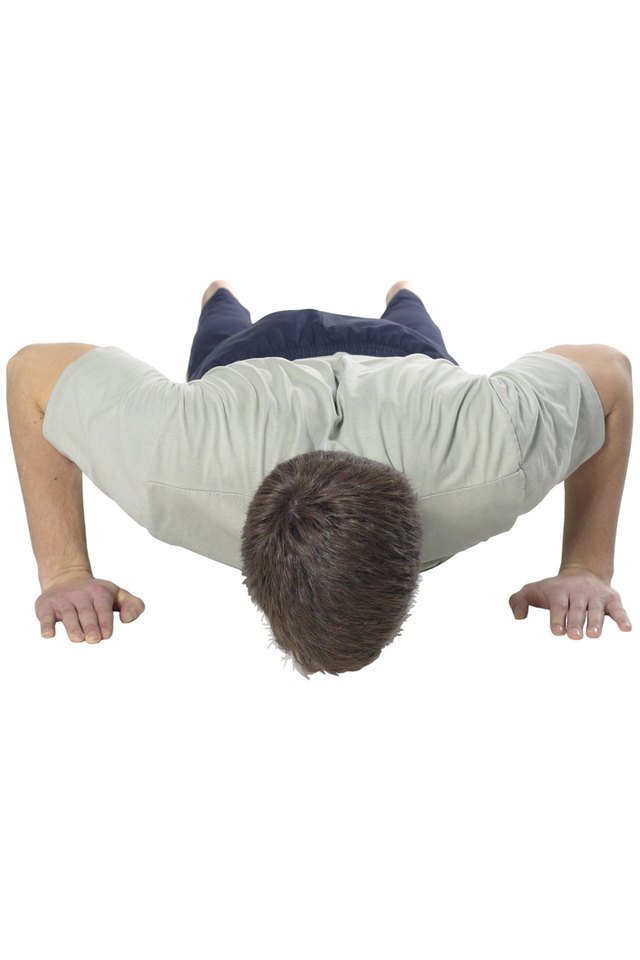Push-Up Motion Analysis

The pushup is one of the oldest upper-body strength-training exercises available. It is commonly used to increase upper-body strength, as well as assess improvements in strength. If you analyze and break down the motions that occur in a pushup, you will see that it works many upper-body muscles both concentrically and eccentrically.
Correct Form
If you are going to analyze the motions in a pushup, you need to ensure you are analyzing the correct form. The pushup starts with you lying on the floor in a prone position with your feet together. Your hands should be flat on the floor pointed forward and under your shoulders, and you should be on your toes with your feet pointed down. From this position, you will push your body off the ground until your arms are straight, making sure the back and legs stay straight. Once you are completely up, you will reverse the process and slowly lower your body back down toward the floor.
Pushing Phase
In the pushing phase, motions are occurring at your elbow, shoulder and scapular joints. In the elbow, extension occurs, powered mainly by the triceps brachia muscle. In the shoulder joint, horizontal adduction occurs. This motion occurs when your upper arms move horizontally toward the midline of your body. The pectoralis major, deltoids, biceps and coracobrachialis muscles contract during horizontal adduction. At the scapular joint, scapular abduction occurs during the pushing phase. This means that your scapulae move forward as they round the back of the ribcage, a motion also known as protraction. The serratus anterior and pec minor muscles power protraction.
Lowering Phase
Once you reach the top of a pushup, you then must lower yourself back down. In the lowering phase, the same muscles that work in the pushing phase are active, but this time eccentrically. For example, in the elbow, flexion occurs as you lower your body, but with the triceps eccentrically allowing this motion. In the shoulder joint, horizontal abduction occurs, eccentrically controlled by the pec major, deltoid, biceps and coracobrachialis muscles. At the scapula, scapular adduction, or retraction, occurs, which the serratus anterior and pec minor eccentrically control.
Pushup Training
To improve your ability to do pushups, you need to train the muscles described previously. This can be accomplished by simply doing more pushups, specifically three sets of pushups until failure on three nonconsecutive days of the week. You can also incorporate other similar motions into your routine, such as a bench press and chest press. These exercises have almost the same exact movement pattern as a pushup, and thus training these exercises can directly result in improved pushup capacity. Try to do these exercises on three nonconsecutive days of the week, choosing a weight that allows you to complete 10 to 15 repetitions until failure.
References
- Manual of Structural Kinesiology; Clem W. Thompson
- ExRx.net: Pushup
- ACE Fitness: Pushup
Writer Bio
Scotty Brunning is a Chicago-based health and fitness writer. Having worked with the Pittsburgh Pirates and the Cooper Fitness Center in Dallas, he has a plethora of fitness experience. He is an ACSM-certified health fitness specialist and a Cooper Institute master fitness specialist. Brunning holds a master's degree in health and fitness.
